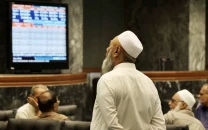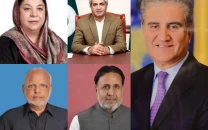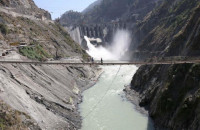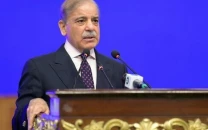Monitoring the manifestos – V: Unemployment
PPP and PML-N focused extensively on unemployment in their manifestos for the 2008 elections.

Monitoring the manifestos – V: Unemployment
PPP: A four-pronged strategy will be used to provide income earning opportunities to the poor as well as unemployed youth.
A labour-intensive Public Works Programme (PWP) will be put in place so that there is guaranteed employment, for at least one year, to one working member of the poorest 25 per cent families of Pakistan.
A Literacy and Health Corps Scheme will be established. Under the scheme, there will be an employment guarantee of two years to all youth completing intermediate, graduation and post-graduation in a given year. A large proportion of the jobs will be in the social sectors (elementary education and basic health-care) and will form part of the PPP’s programme for the expansion of social services.
The PPP will put in place programmes which offer the youth vocational education and technical training in those service sectors where there is a shortage in the market.
An appropriate microfinance policy and institutional reforms will be put in place so that commercial banks, micro-finance institutions and NGOs aggressively increase their outreach to meet the goal of five million beneficiaries on a sustainable basis.
ANP: Failure to provide meaningful employment is a major cause of radicalisation in Khyber- Pakhtunkhwa. If youth are unable to find jobs they lose hope and many drift towards drugs and extremism. This cycle will be broken by providing employment targets for each year. All projects and programmes shall be driven by this priority.
Linked with this approach shall be the reform of education system so that skill development and vocational training starts at an early stage.
Special attention will be paid to the problem of the educated unemployed. Facilities like internship, placement bureaus and advisory organisations will be provided to help them find jobs. The projects of self-employment would also be given priority.
MQM: The MQM’s manifesto linked poverty alleviation with unemployment. The specific measures for unemployment were: Social Security schemes would be introduced and enforced to cover all adult population. Encouragement of industrialisation, promotion of cottage industries, establishment of vocational institutions and incentives for agro-based industries in rural areas to control unemployment.
PML-N: A National Manpower Plan will be prepared to match the demand and supply of manpower and to provide a basis for periodical adjustments in the programmes of education and training.
New employment opportunities will be provided to over three million persons in the public and private sectors.
A National Employment Fund will be created to assist qualified and skilled youth to set up their own business or professional practice. Self employment on individual or cooperative basis will be given maximum support.
Employment opportunities for qualified doctors will be provided by constructing more hospitals; extending soft term, easy instalment loans on personal surety to doctors to establish them in private practice; and giving tax concessions for establishment and expansion of private hospitals.
A comprehensive programme will be implemented for the full absorption of engineers, scientists and other skilled manpower, including a new National Consultancy Policy for the use of national consultants, strengthening and expansion of existing scientific institutions, creation of new institutes for modern technologies and making it obligatory for private industrialists to hire adequate expertise in their respective fields.
A programme for the development of technical skills to produce technically trained and employable manpower will be implemented. For this purpose the intake of polytechnics and vocational schools. Initially this can be achieved by introducing double shift in existing institutions.
STATUS: The Pakistan Labour Force Survey for 2009-2010 put unemployment at 5.6 per cent, with unemployment rising in Sindh and Punjab. According to the CIA World Factbook, unemployment was estimated to be 14 per cent in 2009 and 15 per cent in 2010. Other estimates, including one by a former economic adviser for the finance ministry, put unemployment at 34 per cent.
The government launched the highly publicised Benazir Income Support Programme. However, it was criticised by opposition parties, and inquiries have been launched to investigate alleged embezzlement of funds.
Other initiatives by the government include the President’s Rozgar Scheme (which provides a maximum Rs100,000 loan to start up a business), micro credit facilities at Khushhali Bank, the establishment of the National Vocational and Technical Education Commission and a National Internship Programme.
Published in The Express Tribune, February 25th, 2011.



















COMMENTS
Comments are moderated and generally will be posted if they are on-topic and not abusive.
For more information, please see our Comments FAQ